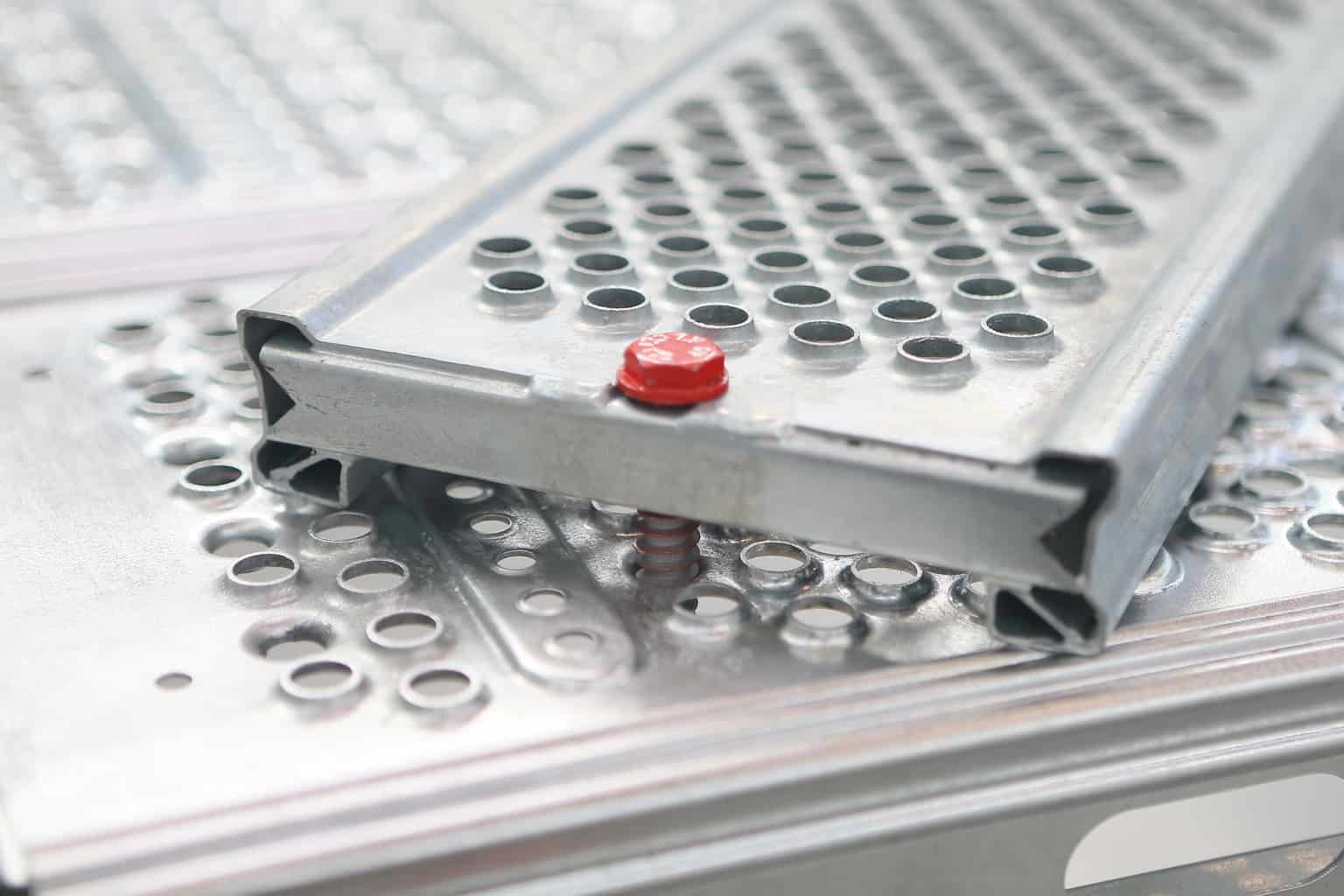“With scaffolding, access and protection systems, there is no reason why light weight and ease of handling should reduce strength and performance – indeed, this is one of the key drivers behind our ongoing commitment to innovation.” Sean Pike is UK Managing Director of Layher Ltd, the world’s largest manufacturer of modular systems, and believes the industry’s move towards equipment that is light yet strong has much to offer.
Always at the heart of Layher’s success – established in 1945, the company opened its first UK depot in Letchworth in the 1980’s – is the design of its rosette connection system. This creates multiple choices of installation layout and, because it does not require separate clamps, produces both operational and safety benefits.
“This early innovation has been followed continually by further improvements and developments that have all focused on greater site efficiency, installation versatility and, of course, safety,” continues Sean Pike. “Today, the focus in many areas is on light weight designs which, thanks to modern methods of manufacture – including the greater use of high tensile materials – go hand-in-hand with improved strength and performance, and thus better handling for the users themselves.”
From a project and site management perspective, this produces clear-cut, tangible results. Reduced transportation and storage needs arise from less material requirements providing a wide range of structural options and opportunities.
“Crucially, this trend towards lighter components also brings major benefits to the scaffolding workforce,” adds Sean Pike. “Because so much equipment can be manually handled with comfort, there is less physical stress on manpower with clear gains in terms of, for example, musculoskeletal complaints, output and therefore time savings.”
Sean Pike draws attention to two recent developments from the company that have resulted directly from this approach.
Layher’s improved steel deck LW completes the lightweight range. Made from high tensile steel but with a reduced thickness to just 1.3mm and a weight reduction of 2.2kg, it optimises the cross section via special processes and intelligent concentration of material, where needed. With improved longitudinal reinforcement for optimal load transfer and surface cross reinforcement for higher stability when walking across the deck, it has the same load class and bending stiffness as current steel decks, but with much-improved handling.
“Generally, the Allround lightweight scaffold system has built on this principle and is now our best-selling system option worldwide,” continues Sean Pike. “It delivers some 24% greater bending strength than Allround K2000+, while the design also includes an ‘auto lock’ feature that makes the most of the fact that workers can handle and undertake key elements of a scaffold structure’s erection by themselves.”
He explains that Layher’s wedge design, which links into the built-in rosette connector on each standard, simply drops into position as it is offered up to the rosette to create sufficient stability before it is permanently fixed in place. “Speed of erection is enhanced while, once installed, the same lightweight materials enable 100mm extra headroom to be created on each lift – a further safety feature in each case.”
The take up of modular system scaffolding in the UK is now well established with benefits in terms of performance and project scheduling widely in evidence. It is a growing sector of the market that has, over the years, prompted Layher to build on that initial depot and head office location with facilities now in the north of England, Scotland, Ireland and, most recently, the West Midlands.
“We always point to the opportunities that our philosophies create for innovation. A developing list of tailored components that fulfil specific needs while still integrating with our proven connection system clearly endorses this view,” concludes Sean Pike. “The greater use of lighter weight materials now builds on this to the benefit of project management and workforce alike.”
This article was first published in ScaffMag Issue 6


